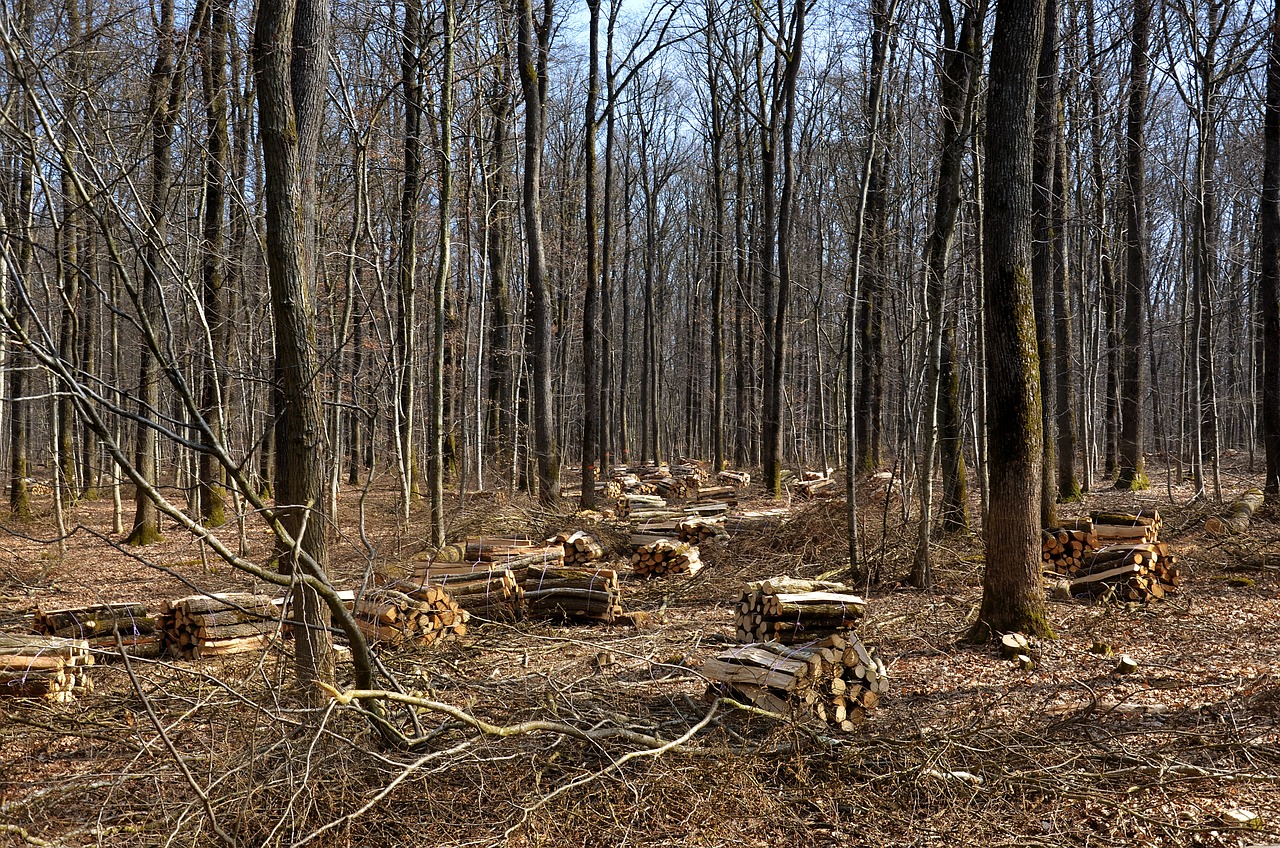Optimizing Biomass Transport: Challenges and Solutions
Biomass transportation plays a pivotal role in the renewable energy sector, facilitating the journey from raw resources to sustainable power generation. In this dynamic landscape, the transport of renewable biomass, including energy wood, stands as a vital link in the chain of clean energy production. However, as with any transformative industry, this sector faces its share of challenges.
One of the primary challenges lies in the efficient and cost-effective transportation of woody biomass, the cornerstone of renewable biomass feedstock. This raw material, encompassing energy wood harvested from forests, holds the promise of a greener, more sustainable future. Yet, its transport poses unique obstacles that must be overcome to fully harness its potential.
In the pages that follow, we delve into the intricate world of biomass transportation, exploring the complexities and opportunities it presents. From low-bulk density to material handling difficulties, we’ll uncover the key challenges that underscore the importance of innovative solutions. Join us as we navigate the realm of biomass transport, revealing how it shapes the landscape of renewable energy production.
Contents
Low-Bulk Density: A Weighty Challenge
In the realm of biomass transportation, a substantial hurdle emerges in the form of low-bulk density, a characteristic inherent to raw woody biomass, including energy wood. This challenge is not to be underestimated, as it has profound implications for the entire logistics chain, particularly when it comes to transportation costs.
The Weight of Air: One of the central contributors to this challenge is the significant presence of air within the transported volume. The inherent low-bulk density of energy wood results in a larger volume being occupied by air rather than the biomass itself. This added volume translates directly into increased transportation expenses, as more space is needed to move the same amount of material.
Managing Woody Biomass Handling
While energy wood and other forms of woody biomass hold immense promise in the realm of renewable energy, their complex texture poses technical difficulties that demand careful consideration. As we venture further into the heart of biomass transportation, it becomes evident that addressing these intricacies is essential to maximize the potential of this valuable resource.
The Complex Texture Challenge: Woody biomass, including energy wood, is not a homogeneous substance. Instead, it comprises a diverse mix of materials, from branches and logging residues to stumps and construction waste. This diversity, combined with the inherent variability in texture, makes the handling and transport of woody biomass technically challenging.
The Call for Innovative Solutions: Recognizing these challenges is the first step in finding solutions. In the pages ahead, we’ll shed light on the innovative approaches and technologies that are emerging to address the complex texture of woody biomass. These solutions are not only reshaping the way we handle and transport biomass but are also paving the way for a more sustainable and efficient future in the renewable energy sector.
Compaction and Comminution Solutions
In the quest to overcome the challenges of low-bulk density and complex material texture in biomass transportation, innovative strategies have emerged, reshaping the way we handle and transport renewable biomass, including energy wood. This section introduces two key concepts—compaction and comminution (chipping, grinding, shredding)—that are at the forefront of these transformative solutions.
Compaction and Comminution Unveiled: Compaction involves the process of compressing biomass, reducing the void space filled with air, and consequently increasing its bulk density. Comminution, on the other hand, includes methods such as chipping, grinding, and shredding, which break down the raw biomass into smaller, more manageable pieces.
Trade-Offs and Considerations: While these processes hold great promise, they also come with trade-offs and considerations. The reduction in particle size and the increase in bulk density can lead to improved transportation efficiency and reduced costs. However, it’s essential to balance these benefits with potential challenges, such as decreased durability and longevity during storage.
Role of Transportation in Biomass Supply Chain
Efficient biomass transportation quietly plays the role of a silent driver in forest-derived product activities. Its significance lies in its ability to seamlessly connect the forest resources to energy production facilities, ensuring that renewable biomass, including energy wood, reaches its destination without unnecessary delays or wastage.
Cost Efficiency: Efficient biomass transportation optimizes the use of resources, reducing transportation costs and minimizing waste. This translates into cost savings that can be reinvested in the development of renewable energy technologies or other forest-derived product activities.
Resource Availability: A well-organized transportation system ensures a steady supply of biomass feedstock to processing facilities. Delays or disruptions in transportation can lead to production bottlenecks, hindering the entire renewable energy or bio-based product production process.
Environmental Considerations: Transportation is a crucial factor in the environmental footprint of forest-derived product activities. Efficient transportation can reduce greenhouse gas emissions, air pollution, and the overall environmental impact associated with biomass supply chain operations.
Supply Chain Resilience: An organized transportation system contributes to the resilience of the biomass supply chain. It ensures that biomass materials are available when and where they are needed, preventing shortages or overstock situations that can disrupt production.
Modes of Biomass Transportation
The transportation of biomass materials can take various forms, each suited to specific needs and conditions. Understanding these modes of transportation is essential for optimizing the movement of renewable biomass resources:
- Trucks: Trucks are a versatile and widely used mode of biomass transportation. They can handle various types of biomass, from energy wood to agricultural residues, and are adaptable to different road conditions. Trucks offer flexibility in terms of cargo capacity, making them suitable for both short-distance and long-distance transportation.
- Log Trailers: Log trailers are designed specifically for transporting logs, poles, or shortwood. They are lightweight and have high payload capacities, making them ideal for the forest industry. Log trailers may require unloading equipment at receiving facilities, and their suitability depends on the type of biomass being transported.
- Container Trailers: Container trailers are designed for bulk material transport, and their containers are designed to be handled when full. They are suitable for collecting biomass in areas with limited road access or smaller volumes. Container trailers can also serve as on-site storage.
- Vans: Enclosed box trailers, known as vans, are typically used for transporting highway cargo, including biomass materials. However, they require modifications to handle bulk biomass effectively. Vans are suitable for biomass that needs protection from weather and environmental factors.
- Rail: While less common, rail transportation can be employed to move biomass feedstock to facilities using it for energy or bio-based products. Rail is particularly practical for long-distance transportation to large facilities.
Each mode of transportation has its advantages and limitations, depending on factors like the type of biomass, distance, infrastructure, and logistics. Selecting the most appropriate mode is crucial for optimizing biomass transportation in forest-derived product activities.
Trucks in Forestry Product Transportation
Trucks have long held a pivotal role in the transportation of forestry products and timber, playing a crucial part in the forest-derived product supply chain. In this section, we delve into the significance of trucks as the workhorses of this industry and their paramount importance in ensuring the efficient movement of vital resources.
Versatile Haulers: Trucks are versatile and adaptable, capable of transporting a wide range of forestry products, including logs, lumber, pulpwood, and biomass feedstock like energy wood and residues. Their adaptability allows them to serve multiple facets of the forest industry.
Timber Transport: Timber harvesting is a fundamental activity in forestry, and trucks are indispensable for moving timber from the harvesting site to processing facilities. They provide the means to efficiently transport raw timber materials, enabling the production of various wood-based products.
Biomass Logistics: In the era of renewable energy and sustainable practices, trucks play a pivotal role in the transportation of biomass feedstock. They are responsible for collecting and delivering biomass materials, such as wood chips, sawdust, and logging residues, to facilities that convert them into bioenergy or biofuels.
Flexibility and Accessibility: Trucks can navigate a variety of terrains, making them accessible even in remote or challenging locations where other modes of transportation may struggle. This flexibility ensures that forestry products can be transported from virtually any forested area to their intended destinations.
Supporting Rural Economies: The reliance on trucks for forestry product transportation has deep economic implications, particularly for rural communities. These trucks are not just vehicles; they are lifelines that connect remote regions to economic opportunities, sustaining local livelihoods.
Efficiency and Environmental Considerations: While trucks are vital to the forestry industry, there is a growing emphasis on making their operations more efficient and environmentally friendly. Innovations in logistics, technology, and sustainable practices are continuously improving the efficiency of timber and biomass transportation.
Conclusion
In conclusion, biomass transportation is a critical link in the renewable energy sector, connecting raw resources like energy wood to sustainable power generation. However, it faces challenges such as low-bulk density and complex material textures, which increase transportation costs and handling difficulties.
To address these challenges, innovative solutions like compaction and comminution are transforming biomass transportation by increasing material density and efficiency. Efficient transportation plays a vital yet often overlooked role in forest-derived activities, improving cost efficiency, resource availability, and environmental impact.
Exploring various transportation modes, from trucks to rail, offers tailored options for specific biomass transport needs. Trucks, as versatile haulers, are essential in transporting forestry products, including energy wood, contributing to rural economies and sustainability efforts.
In summary, optimizing biomass transportation is a key step towards a greener future. It showcases the dedication of researchers and industry leaders to overcome challenges and tap into the true potential of renewable biomass resources. As we navigate this journey, we discover opportunities in every challenge, leading us to a world powered by clean, renewable energy sources. The future of biomass transportation holds promise, guiding us towards a more sustainable tomorrow.


